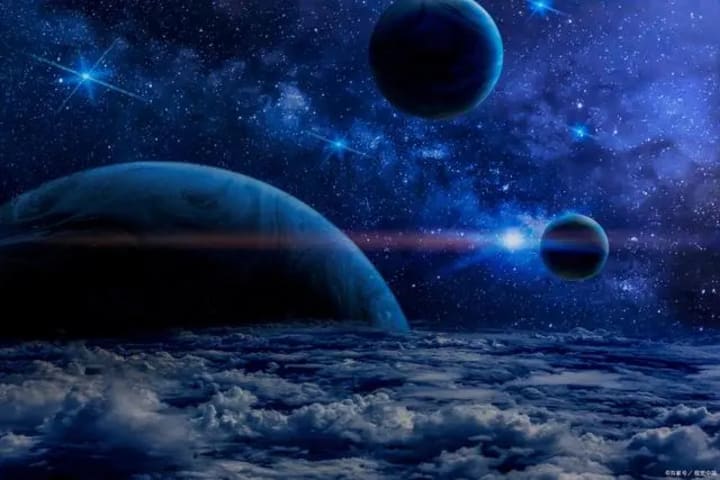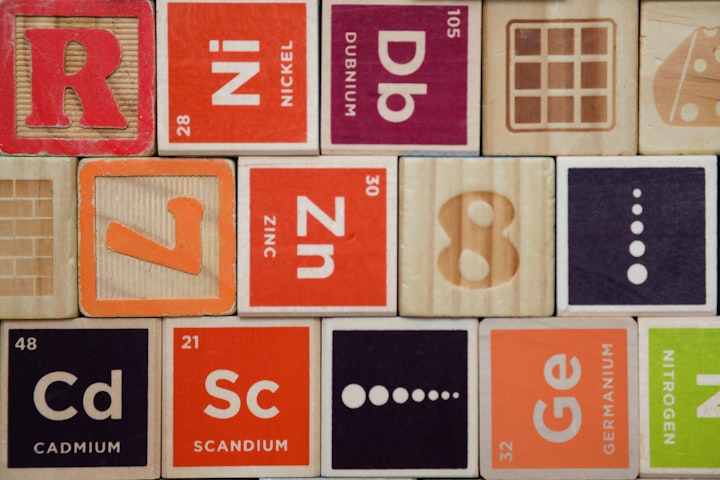How was the Earth formed?
Formed by the collision of external objects, the Earth has suffered numerous impacts

Scientists have detected more than 5,000 planets beyond our solar system, and it is estimated that at least 25 percent of the stars have planets. However, astronomers have yet to definitively find an Earth-like planet with life. The history of Earth's formation and composition has been an unsolved human puzzle. Recent studies have found that the Earth's current, the recent composition would not be entirely consistent if it were composed of only the most primitive rocky meteorites. The chemical composition of the Earth's crust has changed over time due to the numerous impacts of smaller rocky bodies.
I. The solar system and the Earth
The solar system is the closest galaxy to our species and consists of a star and eight planets. The star is the Sun, and the planets are, in order of distance from the Sun: Mercury, Venus, Earth, Mars, Jupiter, Saturn, Uranus, and Neptune.
The planet we live on is Earth, which includes four major circles, the lithosphere, biosphere, hydrosphere, and atmosphere. It is because of the existence of these four circles that we humans are provided with a livable ecological environment, abundant resources, and food sources.
Second, the formation of the Earth
At present, the mainstream view is that the Earth was formed by many collisions of small meteorites in the universe. Models for the formation of rocky planets like the Earth all revolve around collisions.
According to this view, the process began with a rotating disk filled with dust and gas, with a young sun at the center. The dust and gas orbiting the Sun came from a larger, colder cloud of molecular gas that collapsed to form the Sun.
Some of the collapsing clouds have too much angular momentum to fall into the young Sun, and instead form a disk around it. As the disk cools, its solid components accumulate into many planetary building blocks, or "starlets". These starlets often collided with each other, leading to accretion and growth, and eventually the formation of rocky planets.
III. The Earth suffered numerous collisions
During this period of planetary formation, the accumulation of entire planets required hundreds of thousands of collisions. As larger objects grew, they exerted a more gravitational pull on neighboring objects, which led to some collisions being more violent, and even the mildest collisions produced some debris.
These collisions are key factors in shaping the composition of the planets and the structure of the solar system. For example, massive impacts are a favorable explanation for the formation of massive moons, including the Moon on Earth and Charon, the largest moon on Pluto.
These collisions also play a role in other seemingly more subtle details, such as the outward tilt of the spin axis of a planet, such as Uranus, which has a spin axis parallel to its orbital plane. It is not surprising, therefore, to think that these collisions affect the composition of the planets.
IV. What is the evidence for Earth collisions
The key to understanding how collisions alter the observed composition depends on the internal structure of the planets. The planets, including Earth, are not uniform in their structural composition. Instead, they are differentiated or separated into different layers. For example, Earth has a metal-rich iron-nickel core surrounded by dense magnesium and iron silicates and topped by a lighter silicate floating crust.
This difference - a heavier compound in the center and a lighter one in the outer layers - means that the lighter material is more easily removed by collision events. This vulnerability is particularly important for more moderate collisions that do not penetrate or expose the Earth's more dense inner layers.
However, there is also an important nuance to this situation. The compositional differences found in the crust and mantle are based not only on the mass density of the different elements but also on the compatibility of these elements to form molecules with each other. For example, some rare earth elements, such as samarium (Sm) and neodymium (Nd), are incompatible with mantle minerals and are therefore "pushed" into the crust despite being relatively heavy elements.

Because of this detail, the radioactive decay of the isotopes Sm to Nd has been used in geochemistry to study the evolution of the crust and mantle. However, the Earth has an excess amount of Nd compared to meteorites, which are thought to be representative of the planet that built it.
There are three competing explanations for the apparent excess of Nd. One view is that the excess is only "apparent" and that more Nd is present deep in the mantle, but beyond the range of current sampling techniques. Another view is that the meteorites that built the Earth are not identical in composition because the accretion disk around the Sun is not homogeneous; this may be the case in Nd-deficient meteorites. Another possibility is that the crust was continuously eroded by impacts during formation, leading to a greater loss of elements preferentially found in the crust.
Although both Sm and Nd are incompatible with the mantle, this inconsistency is slightly more pronounced with Nd. Therefore, as the Earth formed, the ratio of Nd in the crust to Nd in the mantle was higher than the same ratio for Sm. Because of this, a greater proportion of the Earth's Nd than Sm was removed from the crust by collisions.
V. Explanation of excess Nd in the crust
Frossard et al. argue that there is little evidence to support the hidden Nd theory. They claim that Sm and Nd are too well mixed to fully explain the excess Nd due to the deep convective nature of the mantle during the final stages of Earth's growth. To determine the amount of compositional variation in the components of the Earth, they used fine mass spectrometry techniques to analyze meteorites thought to be representative of the parts that built the Earth.
Based on the measurements, to explain the excess of Nd in the crust, up to 20% of the Earth may have been removed by collisional events during its formation. The authors note that such collisional erosion would also remove other rare earth elements that may have accumulated in the crust. This would explain other mysteries, such as the apparent lack of uranium, potassium, and thorium in the crust.
There are clues that the Earth is not the only planet to have suffered a change in collisional composition. For example, within the solar system, a large collision is a favorable explanation for the lack of crust and mantle on Mercury. Outside the solar system, a giant impact may also be responsible for the high mass density of some exoplanets, such as GJ 376 and Kepler-107c.
Although the Froissart ET AL. find the mg does not directly explain why Earth's ability to support life may be distinct, it highlights the rich diversity among rocky planets and how little is known about the events that formed them.
In summary: The Earth was formed by multiple collisions of meteorites in the universe, and the structural composition of the Earth is heterogeneous, with an inner magnesium layer and an outer silicon-aluminum layer.
About the Creator
Copperchaleu
The most charming woman I've ever met.






Comments
There are no comments for this story
Be the first to respond and start the conversation.